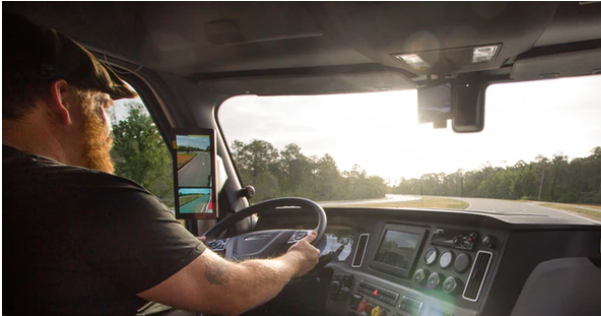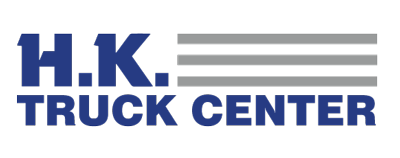
Truck Technology Can Help Make the Industry Safer
Technology is changing everything in our jobs and our everyday lives. When it comes to the trucking industry, truck technology has led to greater safety…for the driver and the public at large. Technology like lane-departure warning, collision mitigation systems, and automatic emergency braking, among others, is expensive (although many newer trucks are already installed with many of these new safety improvements). Repairs for this technology are likely to be higher than for trucks without that technology. But focusing on the immediate costs is short-sighted. When you consider soaring insurance rates and nuclear verdicts, investment in safety technology (and safer drivers) will more than pay for itself in the end.
It’s true that technology won’t prevent every accident or crash as is evidenced by the recent pile-up on Interstate 55 in Illinois caused by a dust storm or the numerous crashes on highways due to ice and snowstorms. But most accidents and crashes aren’t caused by disastrous weather conditions. Actually, only 20 percent of highway crashes are caused by bad weather. That still leaves 80 percent that occur on roads that should be easy to maneuver. So, anything that can make your trucks and drivers safer is something you should be considering.
If you don’t think technology to promote safety is worth investing in, a recent story on Amazon’s website is an eye-opener. It notes that “Amazon will spend $200 million on safety technology across its transportation network in 2023. “The company has equipped its middle-mile fleet, (the step before the last-mile delivery vans) with significant safety technology, “including automatic emergency braking, front-collision warning, stability control, lane-departure warning, side-object detection, adaptive cruise control, and speed limiters. When it comes to their larger vehicles, Amazon has opted for safety for more than five years, installing driver-facing cameras to detect distracted driving and other unsafe behaviors. This will lead to better training for drivers, which can’t be ignored as an essential part of safety.
A recent article in CCJ reinforces this last point. It noted that a carrier that had installed a video monitoring system which included a driver-facing dash camera was able to show that the truck driver who was involved in an accident was neither distracted nor tired. In fact, the forward-facing dash camera showed that it was the driver of the passenger vehicle who was at fault. The article cites a report from the National Surface Transportation Safety Center for Excellence that showed that carriers that “implemented video monitoring saw a 53% to 66% reduction in accidents.”
Safety first
Fleets fully understand why the statement “safety first” is so important…and why fleets back up these words with actions. According to the National Private Truck Council (NPTC) in a 2021 benchmark report (which actually reports on key metrics from 2020), “Private fleets are major adopters of safety technologies, with significant gains this year in areas such as in-cab cameras, adaptive cruise control, and advanced driver assistance systems (ADAS) like collision warning and lane departure warning.”
And promises made are promises kept when it comes to technology. These safety improvement do what they are supposed to do, help reduce accidents and injuries. A 2021 Bosch Research study found that “injuries in truck crashes were potentially reduced by nearly a quarter (23%) if the truck triggered the accident.” And data from the Insurance Institute for Highway Safety stated that fleets can reduce front-end commercial vehicle accidents by 44 percent by adding forward collision mitigation technology.
The steps you need to take to optimize safety technology.
In order for technology to succeed, you need to ensure a number of steps are followed:
- Buy-in – The CCJ article cited earlier lists this as one of the most important steps in ensuring success. Like any other business investment, success depends on leadership within the organization fully backing the initiative and communicating that to the workforce. But once you have that buy-in, you need to get that same agreement from every stakeholder, including drivers. That means explaining why the fleet is implementing this technology and how everyone will benefit from it. It’s also vital to have a company culture that embraces safety.
- Vehicle Maintenance – If you invest in technology thinking it will take care of itself, you’ll soon see problems. Vehicles need to be maintained regardless of how much technology is either built in or put in. The best way to keep your vehicles safe and road-ready is to make sure to conduct regular preventive maintenance on every truck in your fleet. When to perform that maintenance depends on a few issues. First, there is a mandatory annual inspection for maintenance required by the FMCSA. Second, there are preventive maintenance schedules based on OEM and component manufacturers’ recommendations related to warranty coverage. Other than those, preventive maintenance is not a one-size-fits-all practice. You also need ongoing training to make sure every technician in your workforce is up to date on how to maintain technology including the changes that may occur after updates.
- Driver Training – Regulations change, truck technology changes, but the drivers remain the same. That means fleet managers need to have ongoing conversations, meetings, and training sessions with their drivers, ensuring they are up-to-date and committed to compliance. Safety should be stressed constantly, but new technologies introduce complexities that many drivers may not be familiar with. The CCJ article notes, “These vehicle-based technologies produce so much data on individual driver trends and driver safety; that’s a wealth of information that companies can use to train their driver on the specific risks that particular driver has.
Optimizing truck technology to ensure safety is an all-hands-on-deck reality. From company leaders to shift managers to technicians to drivers – everyone has an important role to play. Technology is not going away. Fleets that learn how to best utilize this technology will have a competitive advantage.
About Jane Clark
Jane Clark is Vice President of Member Services for NationaLease. Before joining the full service truck leasing organization, she served in executive positions with some of the nation’s top staffing and recruitment agencies.




